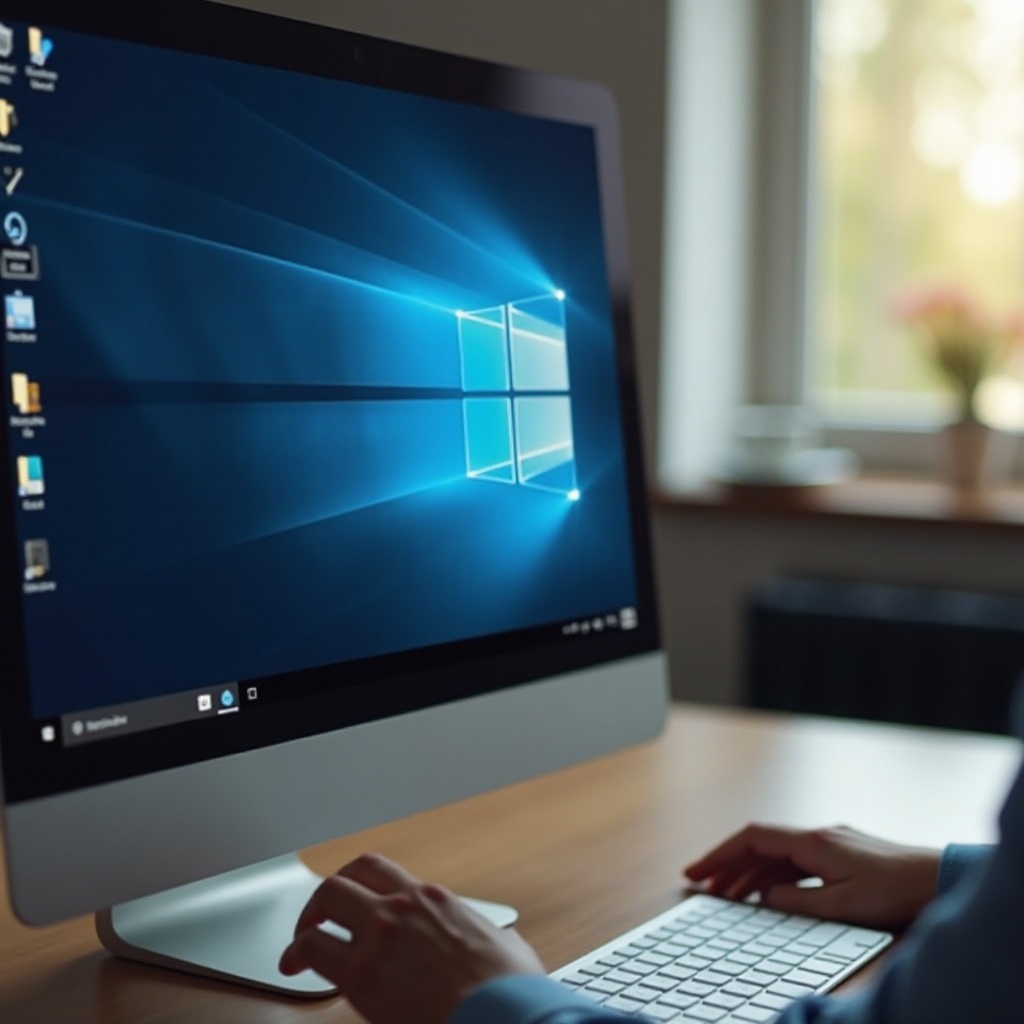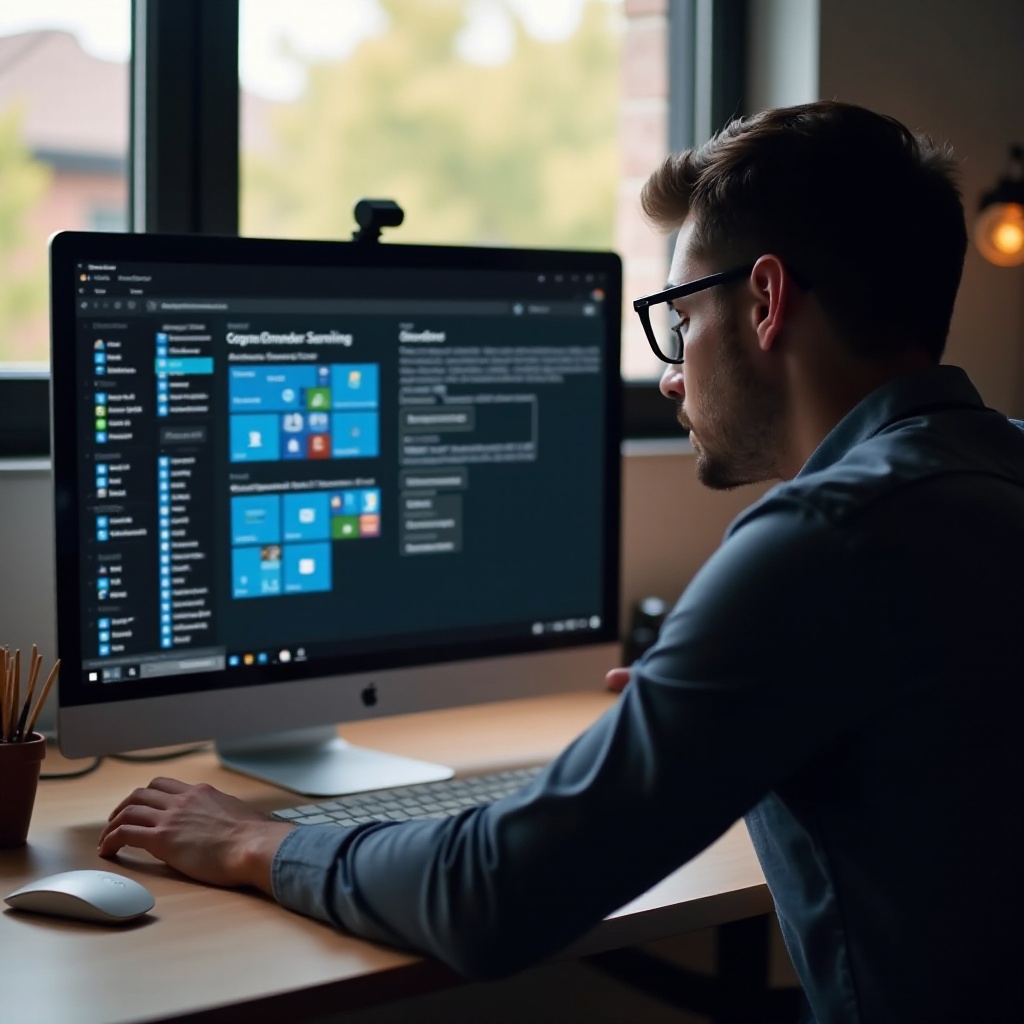Introduction
Windows 10 provides powerful features and a sleek user experience to users worldwide. However, it isn’t without its issues, such as when the Start Menu and Taskbar stop functioning properly. These components are crucial for productivity and ease of use. When they malfunction, it creates significant disruption. Understanding how to resolve these issues quickly and efficiently is vital for an uninterrupted workflow. This article dives into various solutions, ranging from quick fixes to more advanced troubleshooting, to help you get your system back to optimal performance. Let’s explore these methods comprehensively.

Understanding the Problem
Windows 10 is a multifaceted operating system, and the issues with the Start Menu and Taskbar usually arise from several possible causes. Common factors include corrupted system files, conflicting software, or unfinished updates. Understanding the root cause can be daunting for those without an IT background. Recognizing these issues early can prevent them from recurring, thus prolonging your system’s health. This knowledge is essential, as it directs you towards targeted fixes and avoids unnecessary trial and error.
Quick Fixes for Immediate Solutions
When faced with technical difficulties, simple steps can often resolve the problem without the need for complicated interventions. The following quick fixes are recommended for resolving Start Menu and Taskbar issues in Windows 10:
Restart Your Computer
- Click the Start Menu button.
- Select the Power button and choose ‘Restart’.
- Allow your computer to fully restart.
Often, a system restart mitigates minor glitches and refreshes the system.
Check for Windows Updates
- Go to ‘Settings’.
- Navigate to ‘Update & Security’.
- Click ‘Check for updates’, and proceed with the installation process.
Updates are designed to fix known bugs and improve system functionality. Keeping your system fully updated is an effective preventive strategy against future issues.
Restart Windows Explorer
- Press Ctrl + Shift + Esc to open the Task Manager.
- Locate ‘Windows Explorer’ in the Processes tab.
- Right-click and choose ‘Restart’.
Restarting Windows Explorer can often refresh the UI components, potentially resolving Start Menu and Taskbar problems.

Advanced Troubleshooting Steps
If the quick fixes don’t yield the desired results, it’s time to delve into more advanced troubleshooting actions:
Run the Start Menu Troubleshooter
Microsoft offers a troubleshooter specifically for Start Menu issues.
- Download the troubleshooter from Microsoft’s official site.
- Run the ‘Start Menu troubleshooter’.
- Follow all on-screen directions to identify and correct issues.
Use Command Prompt for Repairs
For an in-depth system analysis, use Command Prompt:
- Right-click the Start button and select ‘Command Prompt (Admin)’.
- Enter
sfc /scannowand press Enter. - Wait while the scan identifies and repairs any corrupted files.
Running this command helps in maintenance and repair of vital system files, ensuring a robust Windows 10 environment.
Modify the Registry
Tampering with the registry can solve persistent Start Menu or Taskbar issues, but it requires caution:
- Press Win + R, type
regedit, and click Enter. - Navigate to
HKEY_LOCAL_MACHINE\SYSTEM\CurrentControlSet\Services\WpnUserService. - Modify the ‘Start’ value to 4.
This particular registry change can solve deeply embedded functionality issues but ensure you back up your registry before making any changes.

Long-term Solutions and Maintenance
To prevent issues from arising again, consider these long-term solutions:
Create a New User Profile
Sometimes, issues persist due to a corrupted user profile.
- Navigate to ‘Settings’ > ‘Accounts’.
- Click ‘Family & other users’ > ‘Add someone else to this PC’.
- Follow the instructions to set up a new profile.
Switch to this new profile and observe whether the issues persist.
Keep Drivers Updated
Outdated drivers can result in compatibility problems. Regular updates are essential for system stability.
- Open ‘Device Manager’.
- Right-click each device and choose ‘Update driver’.
Regular monitoring and updating of drivers ensure that your devices function smoothly with Windows 10.
Professional Help and Additional Resources
If the Start Menu and Taskbar continue to malfunction after following all the recommended steps above, it is advisable to seek professional assistance. Microsoft Support, local IT professionals, or trusted online forums are valuable resources. These platforms can provide additional insights and tools, potentially offering solutions that have not yet been considered.
Conclusion
Resolving Start Menu and Taskbar issues in Windows 10 does not have to be overwhelming. With an understanding of the potential causes and the application of these solutions, you can restore your system’s performance effectively. Quick fixes address the most typical issues, while advanced troubleshooting resolves deeper problems. Through consistent maintenance and seeking expert help when necessary, you can ensure your system remains healthy and responsive, enhancing your Windows 10 experience.
Frequently Asked Questions
Why is my Windows 10 Start Menu not responding?
Start Menu issues might result from system file corruption, software conflicts, or incomplete updates. Solutions range from simple restarts to advanced troubleshooting.
How do I restart the Windows Explorer process?
Open Task Manager with Ctrl + Shift + Esc, find ‘Windows Explorer’, right-click it, and select ‘Restart’ to refresh your interface.
Can third-party software interfere with the Taskbar?
Yes, incompatible third-party software can disrupt Taskbar functionality. Managing startup programs and uninstalling unessential applications can help mitigate these issues.


